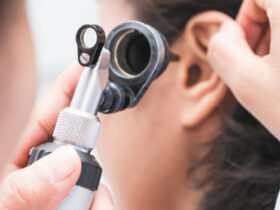The Big toe’s MTP joint or metatarsophalangeal is one of the main joints in the body that causes a great deal of pain for many people. Two common conditions affect the MTP, one is called Hallux Rigidus, and the other is called, Hallux Valgus.
Hallux Rigidus is a form of osteoarthritis that’s typically caused by trauma to the toe. A deformity of limited-range-of-motion takes place, which inhibits extension and flexion movements. The toe is stiff and very painful. Most adults are between the ages of 30-60 years of age when this condition takes place.
Hallux Valgus affects more women than men. It is a painful boney growth on the big toe, also known as a bunion. One of the leading causes of a bunion is from wearing shoes that are too tight, too narrow or too high. All of this causes pressure on your toe joint, which in turn starts to ache, become fluid filled and can have boney growths.
Uniquely, bunions can also be hereditary and run in families, especially in females, generation after generation. In addition, arthritis is usually the cause of these painful, red, boney, growths.
Treatment Options
In the beginning stages of Hallux Rigidus, it’s actually known as Hallux Limitus because most individuals will still have some movement. During this time, conservative approaches can be tested, like stretching the toe, wearing stiff-soled shoes, taking NSAID’s (ibuprofen), corticosteroid injections, or other pain reduction medications. But as Hallux Rigidus progresses, surgery is most likely inevitable.
The surgery is usually accomplished via minimally invasive techniques to remove the bone growths and to free up the joints flexibility and range of motion. The procedure is called a Cheilectomy.
For Hallux Valgas, most individuals start with a conservative approach to alleviate their pain by wearing more comfortable shoes, or by wearing gel toe inserts that help keep the toes in the proper alignment. Icing the foot can help to tamp down inflammations, as well as taking NSAID’s as needed to lessen the discomfort.
When the conservative approach begins to stop working, which is not unusual, as most bunions fail to heal on their own, surgery is the definitive answer. Surgery can be performed using minimally invasive techniques or more aggressive surgery depending on the severity of the bone, joint, and tendon dysfunction.
Surgery can include removing boney spurs, removing part of the toe bone, relieving tension on ligaments and tendons, realigning and reconnecting the joint and bones.
For both of these painful toe conditions, a podiatrist will evaluate your symptoms and pain level, and from there create an individualized plan for your best treatment options. They will provide you with the best solution for your needs.
Dr. Gavin, Southwest Florida’s Prominent
Podiatrist
Dr. Gavin earned his Bachelor of Science in Biology from Niagara
University in Niagara Falls, NY. He is a graduate of Kent State University College of
Podiatric Medicine located in Independence, OH and completed his surgical residency at Humana Specialty Hospital in Memphis TN.
Dr. Gavin is board certified in foot surgery by the American Board of Foot and Ankle Surgery and is a fellow of the American College of Foot and Ankle Surgeons.
He has a solo practice in Fort Myers, FL where he has practiced since 1986 including Shell Point Village retirement community for 21 years. Dr. Gavin has lectured at Niagara University, NY, Midwest Podiatry Conference and the APMA national podiatry meeting. Dr. Gavin specializes in diabetic foot management, trauma, and limb preservation surgery.
After returning from Knoxville, TN, where he worked closely with vascular surgeons specializing in limb revascularization and reconstruction in foot surgery, Dr. Gavin continues to perform advanced podiatric care in Southwest Florida area.
Now Accepting New Patients.
To schedule an appointment, please call:
239-887-4621
www.DrDavidGavin.com
15620 McGregor Blvd
Suite 125 Fort Myers, FL 33908
Additional Services Provided:
• Diabetic Foot Care
• Diabetic Limb Salvage
• Diabetic Wound Care
• Diabetic Ulcers and Neuropathy
• Custom Foot Orthotics
• Flat Feet
• Heel Pain/Plantar Fasciitis
• Walking Problems
• Routine Foot Care
• Ankle and Foot Surgery
• Fractures, Sprains, Dislocations
• Minor in-office surgical procedures
• Ankle Injuries/Sprains
• Athletes Foot
• Fungus Nails
• Arch Disorders
• Arthritis
• Bunions
• Calluses and Corns
• Gout
• Hammertoes
• Heel Pain – Spurs and Fasciitis
• Ingrown Toenails
• Neuromas
• Skin Conditions
• Tendonitis
• Trauma
• Ulcers – Chronic Wounds
• Warts








